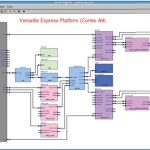You are currently viewing SemiWiki as a guest which gives you limited access to the site. To view blog comments and experience other SemiWiki features you must be a registered member. Registration is fast, simple, and absolutely free so please,
join our community today!
Privacy is a tough enough question when using a device – but what about when we’re done with it? In a world of two year service agreements with device upgrades and things being attached to long-life property like cars and homes, your data could fall into the hands of the next owner way too easily.
“Oh, it’s OK, I wiped the phone with a factory… Read More
There are some interesting parallels between Intel and Microsoft. Both of them missed mobile. Actually they didn’t completely miss mobile, both of them had programs from early days. But clearly they both regarded mobile as a much lower priority: the PC was where all the money was and where it would continue to be forever.… Read More
Most of the buzz on network-on-chip is around simplifying and scaling interconnect, especially in multicore SoCs where AMBA buses and crossbars run into issues as more and more cores enter a design. Designers may want to explore how NoCs can help with a more power-aware approach.… Read More
Baseball loves a good switch hitter – from Frisch to Mantle to Rose to Murray to Jones, they are a rare and valuable commodity. AMD is calling on ambidexterity for its processors in 2015 and beyond, this week tipping plans for 20nm “Project SkyBridge” parts in either ARM or X86 with a common footprint. What remains to be seen is where… Read More
When Apple announced last September their A7 chip had gone 64-bit, the congregation immediately swooned, but analysts reacted skeptically: “So what? Phones don’t need more memory, and there are no 64-bit apps.” Even pundits miss once in a while, and now the topic is how the chip industry is headed for 64-bit.… Read More
In fact KitKat advocates low-power always-on functionality, and this is essential for contextual-awareness. Always-on functionality is saving battery life, which seems to be weird at first: if your phone is always-on you would expect it to consume much power… But always-on goes together with screen-off (the screen is a high… Read More
Yes, it means complete hardware and software integration, debugging, verification, optimization of performance and power and all other operational aspects of an electronic system in semiconductor design. In modern SoCs, several IPs, RTL blocks, software modules, firmware and so on sit together on a single chip, hence making… Read More
Many people are underestimating the speed and the magnitude of the transition that is about to take place with the tandem rollout of iOS 7 and the 64 bit A7 processor. While the former provides a nice visual upgrade to the entire ecosystem the latter will be used to collect accolades and drive application development that will result… Read More
The 80s called, and they want lazy programming back. Remember “Mr. Mom”? Michael Keaton is talking about rewiring the house, and Martin Mull asks if he’s going to use all 220V, and Keaton responds “Yeah, 220, 221, whatever it takes.” Not knowing what’s inside can make you look silly.
Such is the case with OpenGL ES. Taking a look at … Read More
So Blackberry (formerly known as Research In Motion or RIM) is up for sale. Basically, apart from some cash in the bank, its main value now seems to be patents and, perhaps, some security technology. The murderers are in Cupertino and Mountain View, Apple’s iPhone (and iPad) and Google’s Android along with its licensees,… Read More






